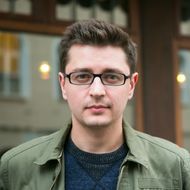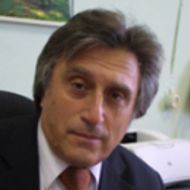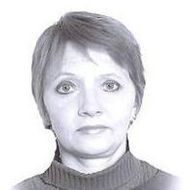- A
- A
- A
- ABC
- ABC
- ABC
- А
- А
- А
- А
- А
- HSE University
- Educational Departments
- Faculty of Humanities
- School of Philosophy and Cultural Studies
- News
- ‘Online Classes Provide a More Comfortable Learning Environment’
-
School
- About the School
- Faculty Members
- International Faculty
- Scientific activity
- Educational activity
-
Research Groups
-
Educational Programmes
-
Conferences
Address: 21/4 Staraya Basmannaya Ultisa, building 1, room 414в
Phone: +7 495 772-95-90*22692
Email: aengovatova@hse.ru

‘Online Classes Provide a More Comfortable Learning Environment’
— Prof. Ousmanova, you are famous in the professional community for your publications in the fields of visual culture, gender studies of Soviet and post-Soviet culture, film theory and history, and semiotics. How do you cover such a wide range of research areas?
— Although I’ve got a degree in philosophy, I’m keen on interdisciplinary studies for a number of reasons.
First, the dissertation for my Candidate of Science degree was devoted to Umberto Eco’s semiotics. To analyze his ideas, you need to know a lot about linguistics and different semiotic traditions, the history and historiography of medieval culture, post-structuralist philosophy, media theory, the political history of Europe, literary theory and history in the second half of the 20th century, avant-garde arts, etc.
Second, if you want to have interdisciplinary expertise, you should be academically mobile—you should work abroad and be able to communicate with different institutions and academic communities in a multicultural (and multilingual) environment. I have had the opportunity to live and work in the USA and various countries in Europe. I have done internships in high-profile research institutes and participated in international research projects. However, the European Humanities University is my main workplace. It has always been a meeting place for different cultures and academic traditions.
Third, areas of expertise such as visual and gender studies are inherently interdisciplinary, and once you are involved in those areas, you cannot remain in the ‘safe’ territory of only one discipline, be it philosophy, history, anthropology or sociology.
— You have been collaborating with HSE University for an academic year. What have your studies been devoted to?
— I was invited to teach on the Master’s Programme in Visual Culture. I have been dealing with contemporary visual culture for a long time, and HSE University has given me an opportunity to combine all my knowledge and interests into a single large course, which comprises four modules and lasts a whole year.
Over this time, my students have got acquainted with various theoretical approaches and analytical methods (semiotics, psychoanalysis, gender theory, postcolonial studies, post-Marxism, etc). We have discussed how to use these approaches in the study of various visual phenomena, global media culture, and the visual daily life of post-Soviet societies.
I want the texts we read to be helpful to my students in their own studies. I saw I had achieved this goal when we were discussing their course papers.
— This has been an online course. What do you think about this format? What are its advantages and disadvantages?
— It has not been difficult at all. On the contrary, this type of communication has a number of pluses. It is more interactive and democratic. You can exchange messages and useful links in the chat box, ask questions orally or in writing, and share your screen if necessary.
It usually takes teachers a lot of time to get acquainted with the students and memorize their names in an ordinary offline class format. Online platforms address this problem successfully. Online classes provide a more comfortable learning environment.
— What are your impression of HSE students? What do you think about their knowledge? Do you think they are ready to do their own research?
— I like my master’s students very much. They are open, friendly, have a variety of professional and academic expertise, and are very motivated to study and do research.
I had a chance to get to know their interests during our research seminar and when we were working together on their course papers. I was able to see their great potential and I hope that some of them will continue their studies in pursuit of PhDs.
— Your students voted for you as one of the best HSE teachers this academic year. How important is that to you? Do you think student feedback is needed to improve the learning process?
— Teachers do need student feedback. Critical comments make us think about what we should improve in the content and design of our courses, our work format, and ways of communicating to make the course even better and more interesting. Positive assessment from students is an indicator of effective interaction, good group dynamics, and, most importantly, usefulness of the knowledge received. I was very pleased to find that my students rated our collaborative work and my professional experience so highly.
Feedback is also useful for managing academic programmes, as it helps adjust the curriculum, improve the learning process, and reconsider the human resource policy if needed. Of course, it only makes sense if the majority of the students who attended the course take part in the poll. HSE University attaches great importance to the representativeness of student polls, as their results reflect reality.
See also here.
- About
- About
- Key Figures & Facts
- Sustainability at HSE University
- Faculties & Departments
- International Partnerships
- Faculty & Staff
- HSE Buildings
- HSE University for Persons with Disabilities
- Public Enquiries
- Studies
- Admissions
- Programme Catalogue
- Undergraduate
- Graduate
- Exchange Programmes
- Summer Schools
- Semester in Moscow
- Business Internship
- © HSE University 1993–2025 Contacts Copyright Privacy Policy Site Map
- Edit



